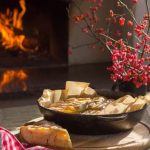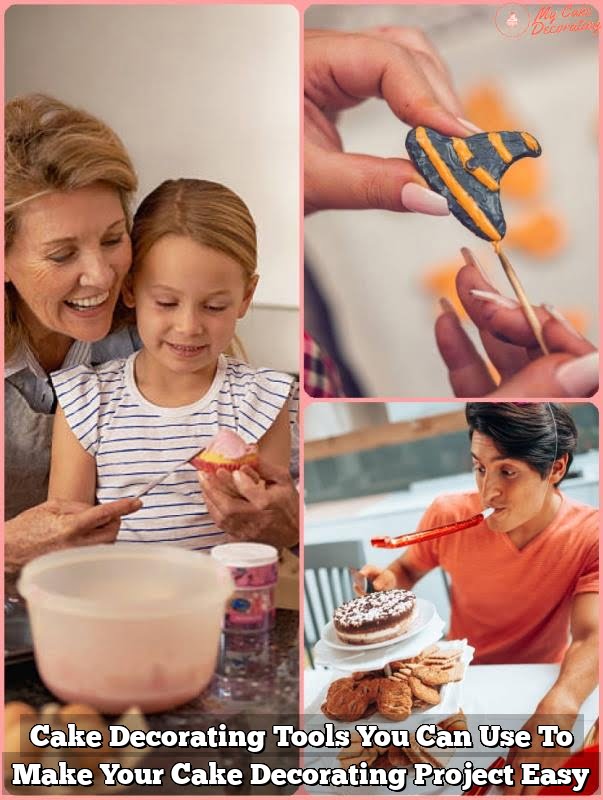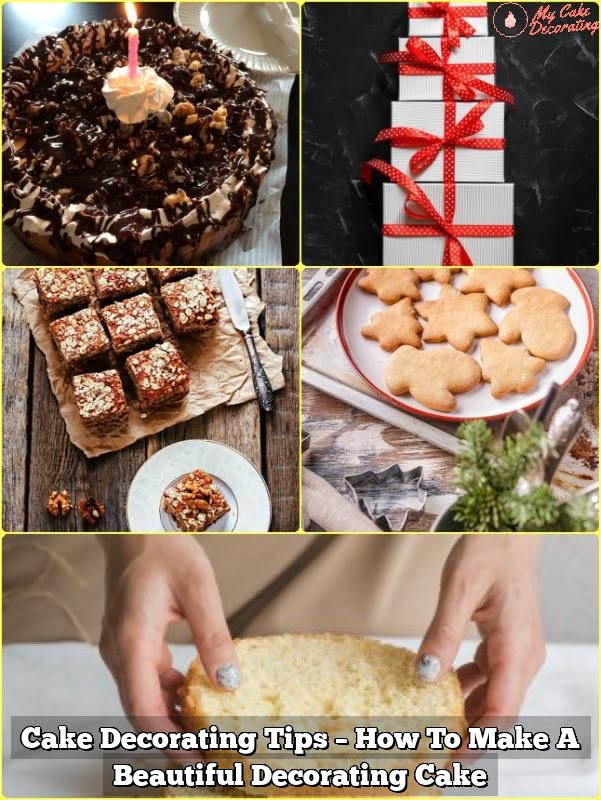Are you looking to add a unique and realistic element to your cake decorating? If so, learning how to make sand for cake decorating can be a game-changer. This article will provide you with step-by-step instructions on creating a sand-like texture for your cakes, from the base preparation to adding realistic finishing touches.
Using edible materials to create sand-like textures has become a popular trend in cake decorating. Whether you want to achieve a beach-themed cake or simply add an interesting visual and textural element, creating sand for cake decorating can take your creations to the next level. With the right techniques and creativity, you can transform a regular cake into a stunning work of art that looks like it’s sitting on a sandy beach.
In this article, we will explore different types of edible “sand” that can be used for cake decorating, as well as provide tips on creating the base mixture and achieving a realistic sand texture. We will also cover ways to enhance the sand texture with edible decorations and troubleshoot common issues that may arise during the process.
So if you’re ready to take your cake decorating skills up a notch, let’s dive into the world of creating edible sand.
Types of Sand
When it comes to cake decorating, using sand-like textures has become a popular trend for creating beach or desert-themed cakes. The good news is that there are various edible materials that can be used to achieve this effect, allowing for versatility and creativity in the process. Some common options for creating sand-like textures include crushed graham crackers, cookies, or sugar.
Crushed graham crackers are an excellent choice for creating a sandy texture on cakes due to their light color and crumbly consistency. They can be easily crushed into fine pieces using a food processor or by placing them in a sealed plastic bag and crushing them with a rolling pin. The resulting texture closely resembles sand and can be adjusted based on the desired coarseness.
Cookies, such as vanilla wafers or shortbread cookies, can also be used to create a sandy texture for cake decorating. Similar to graham crackers, these cookies can be crushed into fine crumbs and layered onto the cake to achieve a realistic sand effect. Additionally, the flavor of the chosen cookies can add an extra dimension to the overall taste of the cake.
Another option for creating edible sand is using granulated sugar. By coloring the sugar with edible food coloring or cocoa powder to achieve the desired shade, it’s possible to create a custom-colored “sand” that complements the cake’s design. This method provides flexibility in terms of both color and texture, making it an appealing choice for many bakers.
Overall, experimenting with different edible materials to create sand-like textures opens up endless possibilities for creative cake decorating. Whether using crushed graham crackers, cookies, or colored sugar, each option offers its own unique qualities that can elevate the appearance and taste of any themed cake.
| Edible Material | Advantages |
|---|---|
| Crushed Graham Crackers | Light color; crumbly consistency; easily adjustable coarseness |
| Cookies | Versatile flavors; customizable texture; adds extra taste dimension |
| Sugar | Flexible color options; customizable texture; complements cake design |
Creating the Base
When it comes to creating a realistic sand texture for cake decorating, the base is key to achieving the desired look. There are several different edible materials that can be used to create the base for the sand texture, including crushed graham crackers, cookies, or sugar. Below are step-by-step instructions on how to prepare the base of the sand texture and achieve the perfect look for your cake decoration.
First, gather your chosen edible material for creating the sand-like texture. This can be crushed graham crackers for a coarser texture, finely ground cookies for a finer texture, or even colored sugar for a more vibrant appearance.
Next, mix in any additional ingredients such as cocoa powder or powdered food coloring to achieve the desired color of your “sand.” This step allows you to customize the shade of your sand to match the theme or overall aesthetic of your cake.
Once your base mixture is ready, carefully spread it onto the surface of your cake using either a spatula or flat-edge tool. Make sure to evenly distribute the mixture across the entire surface in order to achieve a consistent and realistic appearance.
Finally, lightly press down on the sand texture to ensure it adheres well to the frosting or icing underneath. This will give your cake an authentic sandy feel that will impress all of your guests.
In summary, creating a realistic and impressive sand-like texture for cake decorating involves selecting and preparing the right base material and coloration. By following these step-by-step instructions and paying attention to detail when mixing and applying your “sand” mixture, you can achieve a stunning result that will surely wow everyone at your next event.
Applying the Sand Texture
Once you have prepared the base for your sand texture, it’s time to apply it to the cake. There are several methods for achieving a realistic appearance when adding the sand-like texture, and choosing the right technique will depend on the desired effect and overall design of your cake.
One popular method for applying the sand texture is to gently press or sprinkle the prepared mixture onto the frosted surface of the cake. This technique creates a natural-looking sandy surface and can be easily adjusted to achieve varying levels of texture. Another option is to use a piping bag with a large round tip to create small mounds of sand-like mixture on top of the cake, giving it a more sculpted appearance.
For a more intricate design, you could consider using stencils or templates to create specific patterns or shapes in the sand texture. This approach allows for greater precision and detail, perfect for themed cakes or special occasions. It’s important to handle these techniques carefully to avoid damaging the underlying frosting or creating an uneven finish.
As each cake design is unique, experimenting with different methods and combinations of techniques can help you achieve your desired look. Don’t be afraid to mix and match different application styles to create depth and dimension in your sand-textured cake.
| Methods | Effect |
|---|---|
| Sprinkling | Natural-looking sandy surface |
| Piping Bag | Sculpted appearance with small mounds |
| Stencils/Templates | Greater precision and detail in patterns/shapes |
Adding Realism
When it comes to creating a stunning beach-themed cake, adding realism to the sand texture is essential for achieving an impressive and eye-catching result. In this section, we will explore creative and edible ways to enhance the sand texture on cakes, such as using seashells, edible pearls, or edible glitter.
Seashells as Edible Decorations
One of the most popular ways to add realism to a sand-textured cake is by incorporating edible seashells as decorations. These can be made using candy molds and melted chocolate or fondant, allowing for a realistic and delicious addition to your cake. Additionally, edible seashells can also be purchased from specialty baking stores and online retailers, providing a convenient option for those who prefer ready-made decorations.
Edible Pearls
Another elegant way to enhance the sand texture on a cake is by adding edible pearls. These delicate and shimmering decorations can be easily incorporated into the sand-like surface of the cake, mimicking the look of glistening sea foam and adding a touch of sophistication to the design. Edible pearls are available in various sizes and colors, making them versatile for different cake decorating styles and themes.
Edible Glitter for Sparkle
For an extra touch of sparkle and glamour, edible glitter can be sprinkled over the sand-textured areas of the cake. This simple yet effective technique adds dimension and visual interest to the overall design, creating a mesmerizing effect that captures the essence of sun-kissed beaches and sparkling shorelines. Edible glitter is available in a wide range of colors, making it easy to customize the look of your sandy creations.
By incorporating these creative ideas into your sand-textured cake decorating projects, you can elevate your designs to new heights of aesthetic appeal while maintaining an entirely edible approach. Whether you opt for edible seashells, pearls, or glitter-or even all three-these additions will undoubtedly contribute an extra layer of visual allure that will captivate your guests’ imaginations at any special occasion.
Troubleshooting
Uneven Texture
One common issue when creating a sand-like texture for cake decorating is achieving an uneven texture. This can make the sand look unrealistic and take away from the overall appearance of the cake. To avoid this, ensure that the base mixture of crushed graham crackers, cookies, or sugar is evenly spread across the cake. Use a gentle hand when applying the mixture to create an even layer and consider using a sifter to help distribute it more evenly.
If you find that your sand texture is still uneven after application, you can gently pat down areas with too much or too little texture to even it out. Be careful not to press too hard as this can cause the texture to become compressed and lose its sandy appearance.
Texture Not Adhering to Cake
Another common issue is when the sand-like texture does not adhere properly to the cake, resulting in patches where the base is showing through or clumps of texture falling off. To avoid this problem, make sure that your base mixture has enough moisture to stick to the cake but isn’t overly wet. You can add a small amount of edible adhesive such as simple syrup or melted chocolate to help it adhere better.
If you’re experiencing issues with adhesion after applying the sand texture, lightly misting the surface of the cake with water can help rehydrate the mixture and encourage it to stick. Avoid saturating the cake as this could cause colors to bleed and affect the overall appearance.
Color Discrepancies
Color discrepancies can occur when creating sand for cake decorating if you are using different ingredients or if your coloring technique isn’t consistent. To avoid inconsistent coloration, ensure that all of your edible materials are uniform in color before mixing them together for your base. Additionally, mix in food coloring gradually and test it on a small area before applying it to the entire surface of the cake.
If you find that there are some areas with different colors within your sand-like texture after application, you can carefully blend or brush on additional coloring to create a more uniform appearance. It’s important not to overwork these areas as they may become discolored or lose their sandy texture altogether.
Alternative Techniques
Creating a realistic sand-like texture on cakes is not limited to using edible materials such as crushed graham crackers or cookies. There are alternative techniques and methods that can also achieve the same effect. Here are some other ways to create a sand-like texture for cake decorating:
- Edible Paint: Edible paint can be used to create a sandy texture on cakes by carefully layering and blending different shades of brown and beige. This technique allows for more control over the color and depth of the sand-like effect, giving decorators the freedom to customize their design.
- Specialized Cake Decorating Tools: There are specialized cake decorating tools, such as textured rolling pins or embossing mats, that can be used to imprint a sandy texture onto fondant or frosting. These tools create a uniform and realistic sand pattern, making them a great option for decorators who want precise and consistent results.
Using edible paint or specialized cake decorating tools offers decorators more versatility in creating custom sand textures for their cakes. Experimenting with these alternative techniques can open up new possibilities for achieving lifelike beach-themed designs without relying solely on edible materials.
Incorporating these methods along with traditional ingredients like crushed graham crackers or sugar can elevate the overall appearance of sand-textured cakes, providing decorators with additional creative options for their cake designs.
By exploring different approaches to achieving a sandy texture on cakes, decorators can expand their skills and enhance their ability to bring imaginative and visually stunning cake designs to life.
Conclusion
In conclusion, sand-like cake decorating has become a popular trend in the world of cake design, offering a creative and visually appealing way to enhance dessert presentations. By exploring the various types of edible materials that can be used to create a sand-like texture, from crushed graham crackers to sugar, bakers can achieve stunning results that add an extra dimension of realism to their cakes.
Creating the base for the sand texture involves careful mixing and coloring of ingredients to achieve the desired look, and applying the sand texture requires attention to detail and different methods for achieving a realistic appearance. Adding realism to the sand texture with edible decorations such as seashells or edible pearls further enhances the overall design and provides a visually striking aesthetic.
For those interested in trying their hand at sand-like cake decorating, it’s important to remember that practice makes perfect. By experimenting with different techniques and materials, bakers can refine their skills and create stunning sandy textures on their cakes. With patience and creativity, anyone can master the art of sand-like cake decorating and impress guests with their visually captivating desserts.
So why not give it a try today? Start by following these tips and get ready to elevate your cake decorating game.
Frequently Asked Questions
What Can I Use for Sand on a Birthday Cake?
You can use crushed graham crackers or vanilla wafer cookies to create a sandy beach effect on a birthday cake. Simply crush them into fine crumbs and sprinkle them on the frosting to achieve the desired look.
What Can I Use for Edible Sand?
Edible sand can be made using ingredients like granulated sugar, graham cracker crumbs, or even ground almonds. By mixing these ingredients together, you can create a food-safe alternative to real sand for decorating cakes, cupcakes, or desserts.
What Is an Edible Alternative to Sand?
An edible alternative to sand is often made using ingredients like finely ground cookies, cereal, or even toasted coconut. These materials can be used to mimic the look and texture of sand while ensuring that they are safe for consumption when used as decorations on baked goods or desserts.

Welcome to my blog about home and family. This blog is a place where I will share my thoughts, ideas, and experiences related to these important topics. I am a stay-at-home mom with two young children. I hope you enjoy reading it! and may find some helpful tips and ideas that will make your home and family life even better!





